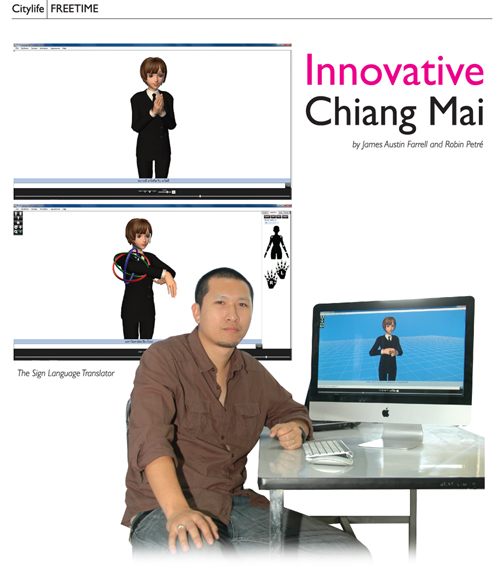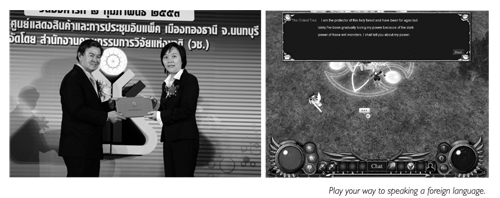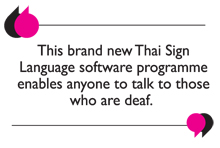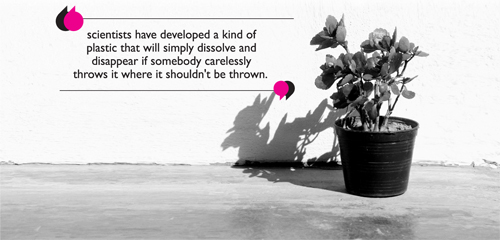
Although Chiang Mai might not be quite as forward thinking as Tokyo, Hong Kong or Dubai, it doesn’t mean we don’t have our own little niche of inventive and innovative thinkers. Citylife has investigated some of the most recent innovations created by Chiang Mai’s creative thinkers, scientists and IT experts.
The Sign Language Translator
This brand new Thai Sign Language software programme enables anyone to talk to those who are deaf. It works with a blue-eyed 3-D model on a computer screen moving her animated arms around in mechanical motions and soundlessly drawing words in the air. She knows about 500 Thai Sign Language (TSL) words by now, but can easily be programmed to do more.
“You can complete the programme yourself by adding more words. Adding one word takes about 20 minutes,” says 28-year-old Natdanai Homkong, who holds a Masters degree in Computer Engineering from Chiang Mai University.
In July this year, he won first prize at the Student Design Challenge in Shanghai with his TSL software programme which took him one year and three months to develop. Right from the beginning, Natdanai had a clear aim with his project:
“Other people in other countries have done something similar to this, but only in the lab. I kept developing this step by step, adding improvements over and over again. I wanted to see this utilised in real life, out in the real world,” he says.
Natdanai’s TSL programme really is useful, which is why the Thai government chose to fund its development. Early next year, the first version of the programme will reach every deaf person in this country at the government’s expense.

“The majority of deaf people in Thailand can’t read. Sign Language is their mother tongue, not Thai. That’s their second language. The TSL grammar is so different from that of written Thai,” says Natdanai.
For instance, the sentence ‘I eat noodles’ turns out to be ‘noodles I eat’ in TSL.
Soon Natdanai’s software will make communication between deaf and hearing people flow smoothly in private homes, hospitals and schools for deaf children all over Thailand.
You type in a word, and the model on the screen immediately translates it to TSL. Additionally, the programme makes a convenient tool for anyone who’s interested in learning TSL by simply imitating the animated model on the screen, which can be set to do her thing in slow motion.
Here are some other cool things we saw in Chiang Mai:
Play your way to speaking a foreign language.
The concept of ‘Game Based Learning’ (GBL) reaches Thailand with the new computer game, ‘The Eternal Story’. At first glance, the Eternal Story seems surprisingly similar to the reality-expanding gaming phenomenon World of Warcraft, but don’t be mistaken. The elf-like player characters bobbing about in the on-screen fairytale world called Eternal World weren’t created just for the fun of it. It has taken Associate Professor Dr. Thanomporn Laohajaratsang from Chiang Mai University (CMU) five years to develop this combination of gaming fun with something useful: Learning a foreign language, in this case English.
This year, Dr. Thanomporn won first prize at the Thailand Game Awards 2010 with the Eternal Story.
 “Not only is it the first and only of its kind in Thailand, I think The Eternal Story won also because the judges acknowledged our awareness that GBL holds great potential as part of our education in the future,” says Thanomporn, pointing out that GBL is listed as number three in an article brought in T+D magazine (which covers training, development learning methods and more) in July this year rating the most important future learning tools – and concepts.
“Not only is it the first and only of its kind in Thailand, I think The Eternal Story won also because the judges acknowledged our awareness that GBL holds great potential as part of our education in the future,” says Thanomporn, pointing out that GBL is listed as number three in an article brought in T+D magazine (which covers training, development learning methods and more) in July this year rating the most important future learning tools – and concepts.
“GBL will become one of the future ways of learning for students in the 21st century,” Thanomporn says.
She intends to expand her gaming concept to encompass other subjects in the future. The limits to this kind of virtual learning are close to nonexistent, and a game like the Eternal Story could theoretically be programmed to teach the player almost any subject.
However, GBL has only just passed the threshold in Thailand.
“But more and more educators are becoming interested in its potential right now,” says Thanomporn. “For the learners’ part, I believe that if the GBL is fun, the students will turn to this rather than choosing the traditional way of learning via instructions given in the classroom.”
Right now Thanomporn and her team are working on implementing the Eternal Story in around 10 universities in northern Thailand.
For further information on the Eternal Story, please feel free to contact the Information Technology Centre, itsc@cmu.ac.th
Save Your Energy!
Speaking to Dr. Kasemsak Uthaichana of the Department of Electrical Engineering at CMU, he explained that Thailand doesn’t produce enough electrical energy and so has to buy energy from Burma and Laos. According to the World Factbook, per capita, Thailand doesn’t consume an awful lot of energy, not compared to the Watt-insatiable countries of Sweden, Norway, Canada or the US. Nevertheless, the faculty of electrical engineering is constantly searching for better ways to create and conserve energy. CMU students recently won 1st place on the ‘Schneider Electric Challenge

University Initiative 2010′, their Energy Plus System where an elevator’s breaking energy is recovered and converted into electrical energy, this is called regenerative breaking. This idea, like many others at the faculty, is not just about saving energy, but generating it. Another initiative is their e-point system, where students are allotted a certain amount of energy points at the start of a term. These points will be deducted every time the student does something like take a lift rather than walk. Students ID cards will register the points loss.
Most of Thailand’s energy – ‘naturally’ – comes from coal (Lampang has the biggest coal mine in Thailand) which has also been a massive cause of complaints for those living nearby due to its polluting tendencies. Kasemsak says that nuclear power stills scares people, and so other forms of alternative energy are always being looked into. Obviously solar power might not generate enough electricity in places like Hull to power a mobile phone, though with Thailand’s predictable sunshine, solar is a workable alternative. “It’s still not cost-effective even with government subsidies,” says the ajarn, “though one roof of solar panelling can give a family quite a lot of power.” He explains that with solar you lose 80% of the energy you gain from the sun, “but when it’s free anyway, you can’t complain,” he adds. He says that people are working on better, more cost-effective panelling that will be as thin as paper and much more flexible.
Producing our own energy, he admits, is possible – as in treadmills – by converting mechanical energy into electrical energy. “But it would have to be cost effective,” he says, adding that your treadmill could store the energy, possibly charge batteries. Not only are you exercising and keeping fit, but you are producing your own electricity! The Fuel Cell System – using hydrogen and oxygen flowing against each other into a cell causes a reaction that produces a source fuel, water, which generates an electrical current – is another form of energy source currently practiced, though the downside again, the ajarn says, is cost.
Self-disintegrating Plastic
Good news for the environment: scientists have developed a kind of plastic that will simply dissolve and disappear if somebody carelessly throws it where it shouldn’t be thrown. This self-disintegrating plastic is made mainly from a powder and lactic acid and costs little to produce. To make the plastic self-destroying, microorganisms and enzymes are added. The plastic is suitable for single use materials such as food containers or plastic plant pots.
Personal Computer-Based Electrocardiograph via USB Port
Local hospitals or health centres situated in rural areas benefit from this device, which allows a doctor to record a patient’s heart beat rate in their home through a USB port onto a PC in his clinic without physically visiting the patient., The Biomedical Engineering Centre, CMU, has developed both the hardware and the software making it possible to read a heart beat rate like that.
Automatic Page Flipping Machine
Here is an invention that will benefit both the disabled and the lazy among us. The Automatic Page Flipping System simply turns the pages for you when you’re going through a book and was mainly created with the purpose of helping people who tragically lost both arms or the ability to control their arm movements. You work the page flipping machine with a foot pedal.
